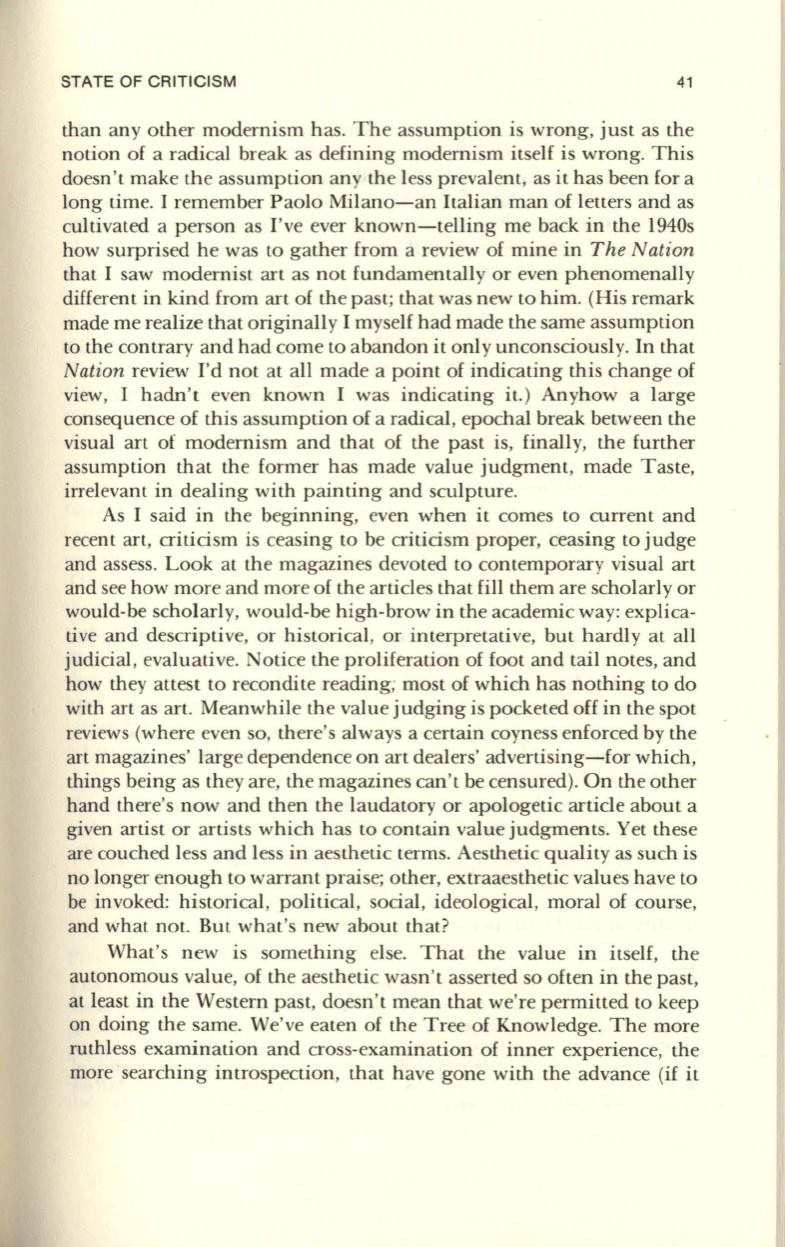
STATE OF CRITICISM
41
than any other modernism has. The assumption is wrong, just as the
notion of a radical break as defining modernism itself is wrong. This
doesn't make the assumption any the less prevalent, as it has been for a
long time. I remember Paolo Milano-an Italian man of letters and as
cultivated a person as I've ever known-telling me back in the 1940s
how surprised he was to gather from a review of mine in
The Nation
that I saw modernist art as not fundamentally or even phenomenally
different in kind from art of the past; that was new
to
him. (His remark
made me realize that originally I myself had made the same assumption
to the contrary and had come to abandon it only unconsciously. In that
Nation
review I'd not at all made a point of indicating this change of
view, I hadn't even known I was indicating it.) Anyhow a large
consequence of this assumption of a radical, epochal break between the
visual art of modernism and that of the past is, finally, the further
assumption that the former has made value judgment, made Taste,
irrelevant in dealing with painting and sculpture.
As I said in the beginning, even when it comes to current and
recent art, criticism is ceasing to be criticism proper, ceasing to judge
and assess. Look at the magazines devoted
to
contemporary visual art
and see how more and more of the articles that fill them are scholarly or
would-be scholarly, would-be high-brow in the academic way: explica–
tive and descriptive, or historical, or interpretative, but hardly at all
judicial, evaluative. Notice the proliferation of foot and tail notes, and
how they attest to recondite reading; most of which has nothing
to
do
with art as art. Meanwhile the value judging is pocketed off in the spot
reviews (where even so, there's always a certain coyness enforced by the
art magazines' large dependence on art dealers' advertising-for which,
things being as they are, the magazines can't be censured). On the other
hand there's now and then the laudatory or apologetic article about a
given artist or artists which has to contain value judgments. Yet these
are couched less and less in aesthetic terms. Aesthetic quality as such is
no longer enough to warrant praise; other, extraaesthetic values have to
be invoked: historical, political, social, ideological, moral of course,
and what not. But what's new about that?
What's new is something else. That the value in itself, the
autonomous value, of the aesthetic wasn't asserted so often in the past,
at least in the Western past, doesn't mean that we're permitted to keep
on doing the same. We've eaten of the Tree of Knowledge. The more
ruthless examination and cross-examination of inner experience, the
more searching introspection, that have gone with the advance (if it


